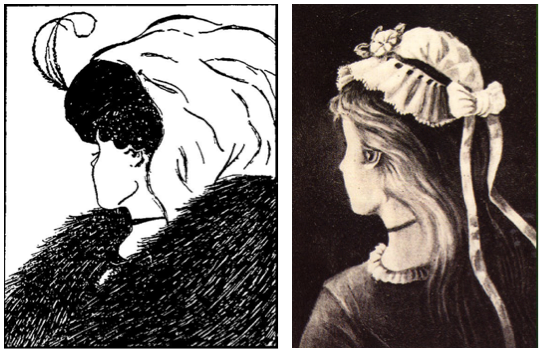Positive peace: An Illusion or Reality?
- laurenjavins8
- Jun 4, 2019
- 3 min read
Updated: Apr 10, 2021
I’ve been thinking recently about why I became interested in conflict resolution.
I’ve never been a competitive person. I’ve never been good at debate, because I can understand both sides of the argument. I’ve always appreciated different perspectives – especially optical illusions.
In school, I think in art class, we were learning about perspective and how different objects can look completely different from separate angles. Before we started drawing anything, our teacher showed the class a picture – an innocent optical illusion. She then asked the class, ”What do you see?”

Hands flicked up excitedly – calls of, “a lady,” “a girl,” “a young lady,” were interspersed with, “old lady,” “grandma,” “witch.” As soon as the students heard what others were saying, they immediately would defend their perspective - get agitated. It was definitely a young lady in the picture – See, that’s her ear, that’s a necklace. No – that’s definitely an old lady – See, that’s actually her eye, and that necklace? Her mouth! They would bicker with someone who saw the other image.
In fact, this exact picture was shown again in a Conflict Resolution class, nearly 20 years later – and I saw the same behavior! Even as adults people still defended their perspective and said that they were right! Some people desperately clung to their idea of what the image was – others were swayed once it was pointed out that the mouth could be a necklace, or that the ear could be an eye.
Now, I don’t remember what I saw first in the picture when I was a kid. However, I can tell you that I now see both the old lady and the young woman at the same time. I really like this optical illusion, or really any optical illusion, because despite the fact there is only one image, people can see vastly different things based on their personal experience.
To me, this example reminds me of conflict (of course!) Two people looking at the same conflict can see two different conflicts started because of many things. The people who are in conflict can see different reasons for why a conflict started, or even how to resolve it. It is the same for peacebuilders – especially in our communication strategies about peacebuilding.
Yesterday I read a very interesting report about narratives for peace by PartnersGlobal, and the Alliance for Peacebuilding. The article got me thinking about collaboration between NGOs, as well as the narratives we use as peacebuilders to engage consumers. The report argues that the narrative peacebuilders need to focus on – as distinct from storytelling -- is the societal narrative, or underlying “attitudes, beliefs and actions that affect a peacebuilding agenda.”
Reframing words to work with the peacebuilding narrative – meaning, putting what we practice into our everyday communication – is also essential for this task. Do we use combative language or war metaphors to make our points? (#wagepeace) Do we use themes of togetherness, global responsibility? Can these words push people farther away – those we are helping and those with whom we could collaborate with to further our shared goals?
In a, TEDx talk, PartnersGlobal President Julia Roig mentions how people in the peacebuilding are siloed and cut off from each other (Systematically siloed because we are all competing for funding from the same sources, but that is just my opinion). Organizations, including non-profits, NGOs, governments large and small that work for the same goal: opportunity for all, ending poverty, ending health disparity, human rights, press freedoms, access to justice, access to investments…. We are all peacebuilders working towards the same goal, but by different paths. Yet we seem to treat organizations that aren’t “ours” as “the other.”
Roig argued for a shift in perspective for peacebuilding practitioners so that they can see the young girl and the grandma at the same time as a whole picture. Rather than seek to out do the other, or marginalize other communities (like the for-profit communities for example), we should work together to build a complete meta-narrative of what peacebuilding is.
As the Engaging Peace Report underlines, we as peacebuilders need to “jointly construct meaning about peace within out field and with the many others we are trying to bring into our efforts. ”[1] Key word: JOINTLY. NGO employees, Non-profit leaders, small business owners, policy makers, vigilante mediators, refugees, civil society, humanitarian aid workers…. Together, if we collaborate on shared narratives of what peace means, and how to build it, we can perhaps finally “be the change we want to see.”
Maybe we will all be able to see the old lady and the young lady. Maybe, positive peace could be a reality rather than an illusion.
[1] “Engaging Narratives For Peace.” By Partners Global, pg 6

Comments